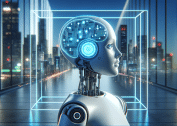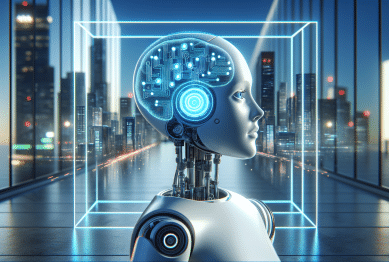Explore how artificial intelligence tools are transforming productivity across industries. From managing your schedule to assisting with creative projects, AI offers practical benefits for daily tasks. Discover ways these technologies integrate with routines, enhance efficiency, and open fresh opportunities.
The Evolving Landscape of AI Tools
Artificial intelligence tools are reshaping how individuals approach daily work. The integration of AI-powered assistants into smartphones, computers, and even smart home devices creates a more connected and efficient environment. These technologies continuously adapt to user habits, learning from data inputs and actively suggesting ways to save time or automate routine activities. The rise of machine learning models means the systems are not static but evolve with usage. As a result, AI tools are accessible not just for large organizations but for anyone seeking to streamline everyday life, whether they’re coordinating meetings, summarizing documents, or setting reminders (Source: https://www.nist.gov/artificial-intelligence).
AI assistants, such as intelligent scheduling programs, are becoming commonplace in many households and offices. These programs use natural language processing to interpret user requests and deliver accurate responses, often integrating with email platforms and messaging clients. Voice-activated devices go a step further, responding to spoken instructions and making information access nearly instantaneous. This incorporation of AI into routine workflows leads to increased efficiency and, over time, naturally helps reduce the cognitive load associated with multitasking and time management.
Beyond scheduling and reminders, artificial intelligence applications now include advanced document analysis, sentiment detection in emails, and even the suggestion of personalized content. For creative professionals, AI-driven design tools can generate graphics or assist with editing tasks, while for those in finance, AI-powered analytics programs are able to provide insights from complex data sets. The overwhelming benefit for users is the simplification of complex tasks into manageable and automated processes that are directly tailored to their individual needs and working styles.
How AI Boosts Daily Productivity
AI tools are engineered to identify patterns in workflow and suggest optimizations. A key advantage lies in automated email triage: machine learning algorithms sort, prioritize, and even draft suggested replies, saving considerable time. In workplaces where communication volume can be overwhelming, these capabilities free time for more strategic thinking. Additionally, AI-powered project management tools help teams assign tasks, track progress, and forecast delivery barriers well before they become setbacks.
For individuals, the power of AI-driven search tools extends far beyond internet queries. Semantic search engines within document repositories allow users to retrieve exactly what they need, based not just on keywords, but on the intent behind their questions. This ability to anticipate needs is at the heart of modern AI, and users often find that tools become more useful as they are personalized over time. Reminders, smart notifications, and AI-generated summaries of lengthy reports are now part of mainstream personal productivity.
Creativity can also flourish with AI. In writing, AI editors analyze and offer suggestions for clarity and tone, while creative AI engines generate draft texts, headlines, or entire social posts based on brief inputs. These systems leverage massive libraries of existing content, meaning their outputs constantly improve as new data is fed. For those working in content-heavy roles or rapidly evolving industries, such support is invaluable. Users enjoy not only efficiency but also improved quality in their daily output (Source: https://www.brookings.edu/articles/how-artificial-intelligence-is-transforming-the-world/).
Popular AI Solutions and Their Features
From personal assistants to corporate-level analytics platforms, AI tools come in many forms. Digital voice assistants, like those found on smartphones, offer hands-free control of devices and access to vast knowledge bases. Calendar management apps suggest optimal meeting times and can auto-reschedule appointments when plan changes are detected. AI chatbots, meanwhile, have revolutionized customer service, guiding users through troubleshooting steps or providing instant answers to common queries.
One increasingly popular segment is AI-driven document handling, where tools scan, classify, and extract data from contracts, receipts, and other paper or digital records. This automation not only saves time but minimizes user errors, which are common in repetitive manual work. In the realm of creativity, AI-powered graphic design tools can automatically suggest layouts or generate images based on textual descriptions, making visual content creation accessible to users without formal design training.
Data-centric platforms use AI to streamline large-scale analysis. For instance, in scientific research, AI models parse complex datasets and identify correlations that might be missed by manual review. Businesses benefit from AI-enhanced dashboards that visualize trends, flag anomalies, and provide actionable recommendations. With increasing interest in remote and hybrid work, AI integrates securely into collaborative environments, supporting real-time communication and resource sharing among distributed teams (Source: https://www.mckinsey.com/capabilities/quantumblack/our-insights/the-state-of-ai-in-2023-generative-ais-breakout-year).
AI Adoption Challenges and Ethical Considerations
Despite the promise, widespread adoption of AI tools is not without obstacles. Data privacy remains a significant concern, as many applications require access to sensitive information to function optimally. Organizations and individuals must strike a balance between convenience and security, with robust policies in place to ensure compliance with evolving privacy standards. Understanding how data is used, stored, and, in some cases, shared is critical for responsible AI utilization.
Algorithmic transparency is equally vital. Many users are understandably wary of systems making decisions without clear human oversight. There is ongoing research and collaboration between developers, policymakers, and ethicists to create frameworks ensuring that AI acts within defined ethical boundaries. As AI tools become more embedded in essential processes, questions about accountability and fairness gain urgency, particularly in high-stakes domains like healthcare or recruitment (Source: https://www.nature.com/articles/d41586-023-04080-w).
Bias in AI models is another significant debate. These tools can, unintentionally, reinforce or amplify existing human prejudices if their training data is not unbiased. Addressing such bias requires careful design, ongoing monitoring, and transparent reporting of algorithms’ performance. Ensuring that diverse datasets are used can alleviate risks, but vigilance is needed as AI adoption becomes more widespread. Users and organizations alike have a shared responsibility to ensure that the deployment of AI improves access and equity.
Practical Ways to Integrate AI into Everyday Life
Integrating AI into daily routines begins with identifying tasks that are time-consuming or repetitive. For personal organization, setting up smart reminders or automating bill payments with AI-powered financial apps delivers immediate benefits. In communicating, enabling AI features in email clients or messaging apps allows for faster, more accurate replies and reduces manual sorting of messages. Adopting project management tools that feature intelligent scheduling or resource allocation can also yield dramatic time savings.
For those interested in wellness and health, AI-driven fitness trackers analyze activity data and suggest personalized exercise plans. These devices use machine learning to adapt recommendations over time, responding to user inputs and recorded activity. In home environments, smart speakers and thermostats learn preferences and optimize heating, cooling, and lighting, ultimately cutting energy use and improving comfort. Across these applications, a critical consideration is maintaining oversight while letting AI handle routine decision-making (Source: https://ai.googleblog.com/2020/08/ai-for-everyday-life.html).
Learning platforms also incorporate AI to recommend learning paths or resources tailored to user goals and progress. This personalized approach is especially useful in ongoing professional development. For creative pursuits, leveraging AI in music, animation, or writing projects can spark inspiration and accelerate project completion. The most successful integrations are those where AI complements, rather than replaces, human skills—offering suggestions, automating basic functions, and freeing users to focus on innovation and relationships.
Looking Ahead: The Future of AI for All
As AI technology advances, its barriers to entry continue to drop. Cloud-based solutions, user-friendly interfaces, and open-source AI projects broaden availability to those with varying technical proficiency. Future development is expected to prioritize explainability and customization, enabling users to shape tools to their specific routines and preferences. Collaboration across sectors will help set robust standards, ensuring AI is safe, effective, and inclusive.
Growing interest in ethical AI and responsible data use is inspiring collective action among technology companies, academia, and users. Legislative frameworks are evolving to safeguard individual rights while fostering innovation. Additionally, public AI literacy campaigns aim to educate users on potential risks, as well as the opportunities that come with proactive adoption of intelligent systems.
Ultimately, the continued evolution of artificial intelligence tools promises not only greater productivity but also more accessible technology for diverse populations. Responsible use and thoughtful implementation set the stage for AI to become an ally in improving quality of life. The future will likely bring more seamless, intuitive experiences, helping individuals and organizations alike enjoy the advantages AI has to offer (Source: https://ai100.stanford.edu/).
References
1. National Institute of Standards and Technology. (n.d.). Artificial Intelligence. Retrieved from https://www.nist.gov/artificial-intelligence
2. Brookings Institution. (n.d.). How artificial intelligence is transforming the world. Retrieved from https://www.brookings.edu/articles/how-artificial-intelligence-is-transforming-the-world/
3. McKinsey & Company. (n.d.). The state of AI: Generative AI’s breakout year. Retrieved from https://www.mckinsey.com/capabilities/quantumblack/our-insights/the-state-of-ai-in-2023-generative-ais-breakout-year
4. Nature. (2023). The challenges of regulating generative AI — and possible solutions. Retrieved from https://www.nature.com/articles/d41586-023-04080-w
5. Google AI Blog. (2020). AI for everyday life. Retrieved from https://ai.googleblog.com/2020/08/ai-for-everyday-life.html
6. Stanford University. (n.d.). One Hundred Year Study on Artificial Intelligence (AI100). Retrieved from https://ai100.stanford.edu/









